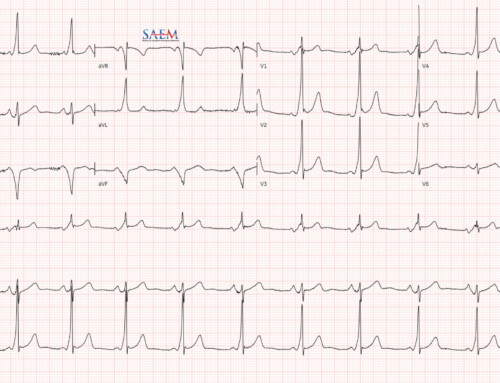
Undifferentiated tachycardias, especially when the rate is extremely fast, make it difficult to see anything other than the QRS complexes! Is there a P or flutter wave?
Trick of the Trade: Speed up ECG paper rate 1,2
Double the ECG paper speed to 50 mm/sec
Standard ECG machines run at 25 mm/sec. If you double the paper output speed, subtle ECG findings hidden in the tracings become more evident. Imagine the ECG tracing as a string and that you are pulling on both ends. Everything, including the QRS complex and intervals, gets wider.
What are your experiences with this?
Atrial flutter at 150 bpm
- Standard rate 25 mm/sec
- Faster rate 50 mm/sec (red arrows are flutter waves)
Thanks to Dr. Amal Mattu for sharing his ECGs with me from his University of Maryland ECG archives. If you haven’t heard of this amazing ECG video series, you should definitely check it out.
Below is the video teaching this point within the topic of narrow-complex regular tachycardias. This trick is seen at the 15:00 minute mark.
For another example, check out Dr. John Larkin’s blog ECG of the Week post on a pediatric SVT rhythm at 300 bpm with no P waves seen at 50 mm/sec.






